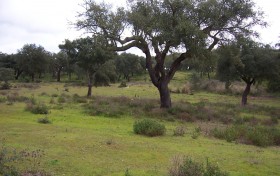CarboForest
CarboForest
Software for Strategic Forest Management Planning
Background of CarboForest

Since 1975 I have had the opportunity to develop, review and advice a large number of companies from New Zealand and Indonesia to Brazil and Chile on their systems for forest planning at different levels. During the 1970s and 1980s there were very few off the shelf systems developed for forest applications, so most of our assignments were to develop tailor made systems for forest companies. Since then several systems have emerged that can be adapted to the specific needs of a company, but very often they have been developed from the view point of providing information for high level management rather than serving the forest managers in their decision making process.
For strategic planning, linear programming, or other optimization processes, have been used to a much larger extent the last 20 years in order to “guarantee” that forest assets are managed to maximize returns under certain constraints. However, such processes are very delicate to handle and can easily produce disastrous results if not managed properly. The optimisation process is very time consuming, even with modern computers, when the matrices grow large, which they do by necessity if compartments should be treated individually. In order to reduce processing time, the forest assets are therefore aggregated, leading to generalized management of compartments from a certain age group and with a certain yield class. My question is: What is actually being optimized when the forest has been reduced to a set of “averaged classes”? If one can truthfully say that the forest management is optimised, it should be at compartment level with its specific costs and income potential. It is also important to have a transparent model so that the decisions taken by the system can be traced and reviewed.
The other extreme which I have encountered is when companies generalise harvesting ages and use a spread sheet to calculate the harvesting volumes. Such systems are simple and easy to handle, but most of the time generate solutions that are far from maximising the returns from the forests.
During all these years, assisting companies all over the world, an idea for a system for strategic planning of the forest management was growing in my head, so when I retired I invested time and money in CarboForest, which reflects my long experience and conclusions from developing and revewing such systems. Since 2010 CarboForest has now proven to be a very useful tool for forest companies in Brazil, Uruguay, Colombia, Spain, Indonesia and Latvia.